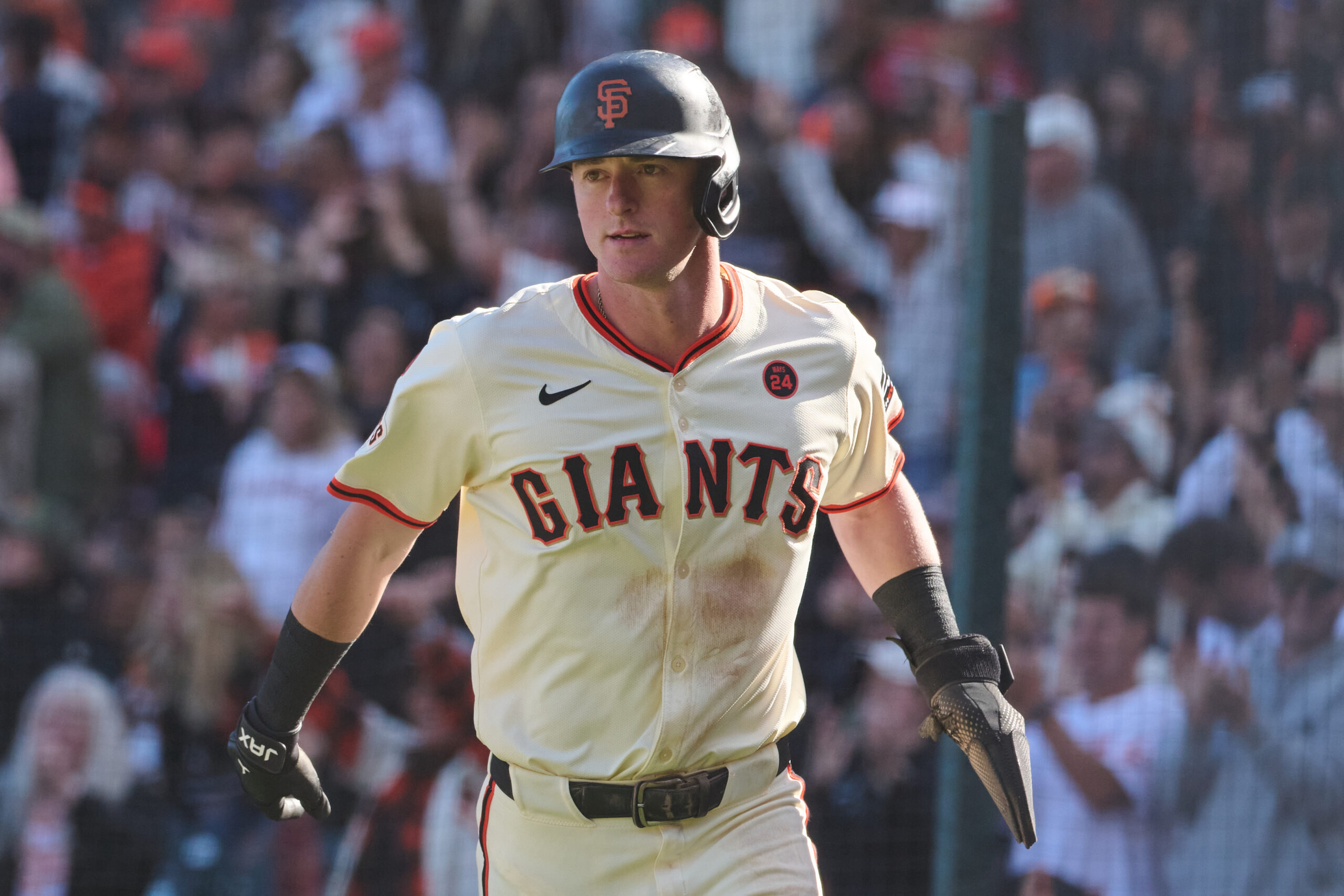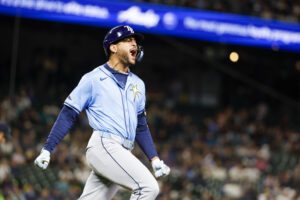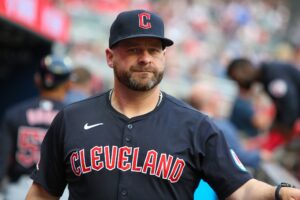Success from unheralded players in the big leagues is always a compelling story. Whether it is an injury or other circumstances that provide these players an opportunity, it is satisfying to see these players run with it and establish themselves. A player that unexpectedly fits this bill is San Francisco Giants shortstop Tyler Fitzgerald. Fitzgerald, 27 years old, spent the majority of his professional career progressing through the minor leagues. An opportunity with the major league club presented itself late in 2023, but it was short-lived, as he only spent 10 games with the team.
However, while he was still a below-average hitter in that short time (95 wRC+), he flashed an interesting power and speed combination with two home runs and two steals in 34 plate appearances.
Tyler Fitzgerald Emerging as a Force to Be Reckoned With
Fitzgerald began the season on the opening-day roster in a utility role. He bounced between Triple-A and the majors for a decent chunk of the season until around late June. During that span, Fitzgerald played sparingly (72 plate appearances), but was above average with the stick (110 wRC+) while being a versatile defender. However, he was striking out a third of the time and not compensating it with hard contact (23.8% hard-hit rate). But, from late June until the end of the season, he ranked 3rd in wRC+ (137) among qualified shortstops, only behind MVP finalists Bobby Witt Jr. and Francisco Lindor. Let’s dig into how he achieved this success and how sustainable it is.
Power Production
The most surprising element of Fitzgerald’s profile was his power production. By his scouting reports, he was projected to have below-average raw and game power. Fitzgerald hit 14 of his 15 total home runs after becoming a full-time player in only 68 games. Over a full season, that translates to roughly 33 home runs. His home run barrage in late July and early August was the most by a Giant since Barry Bonds.
Tyler Fitzgerald is the first Giants player with 11+ HR in a 17-game span since Barry Bonds in 2003 https://t.co/lpMUahnatR
— Sarah Langs (@SlangsOnSports) August 5, 2024
As mentioned, Fitzgerald does not boast elite or above-average raw power like some slugging shortstops. One aspect that Fitzgerald excelled at was pulling the ball in the air. His pull rate was just below 50%, among the 25 highest in the majors. Furthermore, there was plenty of evidence of this pull-happy approach in his minor league days. Pulled fly balls are the most optimal batted ball possible, and that is Fitzgerald’s plan. While Fitzgerald’s pulled fly ball tendencies were not Isaac Paraedes-esque, he again ranked within the top 25 of pulled fly ball rate.
Similar to Paredes and other hitters with average to below-average raw power, this is a common approach to tap into more power. Meeting the ball out in front of the plate allows the bat to get up to full speed. In addition, the distances are much shorter near the foul poles as opposed to the gaps and centerfield. This approach explains part of why this style of player over-performs his expected statistics. Fitzgerald’s .282/.335/.520 slash line was impressive, but some of his expected statistics lagged a bit lower:
| wOBA | .365 |
| xwOBA | .296 |
| xBA | .226 |
| xSLG | .393 |
| Barrel% | 9.7% |
| Hard Hit% | 33.9% |
The 9.7% barrel rate is a solid number and speaks to his ability to consistently square up the ball at the optimal launch angle. Impressively, all but one of his home runs were to the pull side evidenced by his spray chart.
Contact Concerns
Another element of Fitzgerald’s scouting report was a rather poor hit tool. That was consistently on display even during his hot streak. He was still striking out north of 30% of the time while also walking a mere 6.3%. This combination of high strikeout and low walk rates often describes some of the worst hitters in baseball. Fitzgerald’s 0.20 walk-to-strikeout ratio ranked in the bottom 20 of all hitters (minimum 300 plate appearances). The average wRC+ of the other 19 hitters in that sample is around 86. While there are productive players in that group, including strong platoon man Luke Raley and slugger Byron Buxton, the majority are poor hitters.
There is possibly some optimism that he can bring that strikeout number down below 30%. He does not chase an extreme amount, and his 13.9% swinging strike rate is manageable. It will always be relatively high, but perhaps he can settle around a 26-28% strikeout rate.
Future Outlook
On the surface, Fitzgerald looks like an exciting power and speed profile. Given the high strikeout rate, the .280 batting average he ended the season with does not feel real. His batted ball quality is also underwhelming. But, he appears to understand his optimal approach and has shown the ability to lift the ball. Combined with 100th percentile sprint speed, he could be on a positive trajectory now that he has secured full playing time.
His power production profile is difficult to project long-term, given his poor batted-ball metrics. While he may experience a regression as the league adjusts, some projections still forecast a 20-20 season in 2025.
Main Photo: Robert Edwards-Imagn Images






